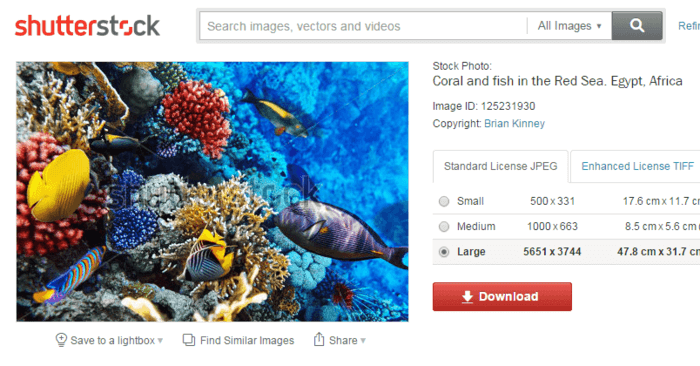If you’re part of a non-profit organization, finding high-quality images without breaking the bank can be a real challenge. That’s where Shutterstock comes in. Known for its vast library of stunning images, Shutterstock is a go-to resource for many content creators, marketers, and organizations looking to elevate their visual storytelling. But did you know that
Understanding Shutterstock’s Non-Profit Image Programs and Eligibility
Shutterstock recognizes the unique needs of non-profit organizations and has developed programs to support their missions. One of the most notable offerings is their Special Discount Program for Non-Profits, which provides access to a curated selection of images at significantly reduced prices—or even free in some cases. However, eligibility isn’t automatic; organizations must meet specific criteria and go through a simple application process.
So, who qualifies? Generally, non-profit organizations that are registered and recognized under local, state, or national laws as charitable, educational, or humanitarian entities are eligible. This includes charities, NGOs, educational institutions, and other similar organizations. When applying, you’ll need to provide documentation proving your non-profit status, such as registration certificates or official documentation from your governing body.
Once approved, non-profits gain access to Shutterstock’s Special Program for Non-Profits. This program offers:
- Discounted or free images for non-commercial use
- Access to a curated library tailored for non-profit needs
- Support from Shutterstock’s dedicated team to help you navigate licensing and usage
It’s important to note that these images are intended for non-commercial projects—like awareness campaigns, educational materials, and fundraising events—and not for resale or commercial profit. Understanding the eligibility criteria and application process ensures you can smoothly access these valuable resources and enhance your organization’s visual content without stretching your budget.
Steps to Obtain Free Images from Shutterstock as a Non-Profit Organization
Getting access to free images on Shutterstock as a non-profit might sound tricky at first, but it’s actually a straightforward process once you know the steps. The key is to ensure your organization qualifies and to follow the proper channels. Here’s a simple walkthrough to help you get started:
- Verify Your Non-Profit Status: Before anything else, make sure your organization is recognized as a non-profit. Shutterstock may require proof of your status, such as a 501(c)(3) designation or equivalent documentation depending on your country.
- Create a Shutterstock Contributor or Non-Profit Account: Visit the Shutterstock website and sign up for an account. During registration, select the non-profit option if available, or choose the standard account but be prepared to provide additional documentation later.
- Apply for the Non-Profit Program: Shutterstock offers a special program for non-profits, which sometimes includes free image access or discounted licensing. Look for the “Non-Profit Program” link or contact their support team directly to express your interest.
- Submit Required Documentation: You will likely need to upload proof of your non-profit status, such as a certificate of incorporation, tax exemption letter, or a letter from your organization’s governing body. Make sure these documents are clear and up-to-date.
- Wait for Approval: After submitting your application and documentation, Shutterstock will review your case. This can take anywhere from a few days to a couple of weeks. Keep an eye on your email for any requests for additional information.
- Access Free Images: Once approved, you should gain access to designated free images or special licensing options tailored for non-profits. Log into your account, browse the library, and look for images marked as free or eligible for non-profit use.
Remember, the process may vary slightly depending on your location and the specific Shutterstock programs available to non-profits in your country. Patience and clear communication with their support team can make the process much smoother. Once you’re set up, you’ll have a treasure trove of high-quality images at your fingertips—ready to support your cause without straining your budget.
Tips for Finding High-Quality Free Images on Shutterstock
Now that you’re all set up to access free images, the real fun begins—finding the perfect pictures that resonate with your mission. Shutterstock hosts millions of images, so knowing how to hone your search is essential. Here are some practical tips to help you find high-quality, impactful images efficiently:
- Use Specific Keywords: Instead of generic terms like “community,” try more descriptive keywords such as “volunteers helping,” “children education,” or “environmental cleanup.” Specific keywords narrow down your results to the most relevant images.
- Filter for Free Content: Most stock image platforms, including Shutterstock, have filters to show only free images. Use these filters to quickly exclude paid content and focus on free options.
- Prioritize High-Resolution Images: Always check the resolution before downloading. Look for images tagged as “high-quality” or “high-resolution” to ensure they look professional across all your materials.
- Check Image Licensing Details: Even if an image is free, verify the licensing terms. Ensure that the image can be used for your intended purpose—whether online, print, or promotional materials—without restrictions.
- Explore Collections and Curated Galleries: Shutterstock often curates collections around themes like “Non-Profit,” “Community,” or “Healthcare.” Browsing these collections can save time and help you discover images that fit your narrative perfectly.
- Utilize Advanced Search Options: Use options like color filters, orientation, or people presence to refine your search. For example, if your campaign uses a specific color scheme, filtering by that color can produce more cohesive visuals.
- Save Favorites and Create Folders: As you find images you like, save them to your account’s favorites or organize them into folders. This makes it easy to compare options and quickly access your preferred images later.
By applying these tips, you’ll boost your chances of finding stunning, high-quality images that truly elevate your non-profit’s messaging. Remember, the right image can tell a story, evoke emotion, and inspire action—so take your time to select visuals that genuinely represent your cause and connect with your audience.
Alternatives to Shutterstock for Free Non-Profit Images
While Shutterstock is a fantastic resource for high-quality images, it’s not the only game in town—especially when you’re working with a tight budget as a non-profit. Luckily, there are several other platforms that offer a treasure trove of free images perfect for your campaigns. Let’s explore some of the top alternatives that can help you find the perfect visuals without breaking the bank.
Unsplash
Unsplash is one of the most popular free image platforms out there. They have a vast library of stunning, high-resolution photos contributed by photographers worldwide. The best part? All images are free to download and use, even commercially, with no attribution required (though giving credit is always appreciated). You can search by keyword or browse curated collections to find images that resonate with your non-profit’s mission.
Pexels
Pexels offers a wide range of free stock photos and videos. Their collection covers everything from community outreach and environmental conservation to healthcare and education. Like Unsplash, their images are free to use for commercial purposes without attribution, making it a hassle-free resource for non-profits needing diverse visuals.
Pixabay
Pixabay provides over 1.7 million free stock images, videos, and music. Their images are released under Creative Commons CC0, meaning you can use them anywhere without asking for permission or giving credit. They also have a user-friendly search function, making it easy to find exactly what you need for your campaigns.
Gratisography
For something a bit more unique and quirky, Gratisography offers a collection of creative, high-resolution images that stand out. These are perfect if you want to add a bit of personality and originality to your visuals, helping your non-profit tell a compelling story in a fresh way.
Flickr Creative Commons
Flickr hosts a vast array of images, many of which are available under Creative Commons licenses. Be sure to check the license type for each photo to ensure it’s free for commercial use and whether attribution is required. This platform can be useful for finding niche or specific images that aren’t always available on other sites.
In summary, these platforms provide excellent alternatives to Shutterstock, offering high-quality, free images suitable for non-profit use. By exploring these options, you can diversify your visuals, stay within budget, and still create engaging, impactful campaigns that truly connect with your audience.
Best Practices for Using Free Images Legally and Ethically in Your Campaigns
Using free images is a fantastic way to enhance your non-profit campaigns, but it’s important to do so responsibly. Respecting copyright laws and ethical standards not only keeps you out of legal trouble but also upholds your organization’s integrity. Here are some best practices to keep in mind when incorporating free images into your work.
Understand the License Terms
- Always read the license associated with each image. Most free platforms specify whether an image can be used commercially and if attribution is required.
- Look out for Creative Commons licenses—some require attribution, others do not. Make sure you comply with the specific license terms.
- Be cautious with images that may have restrictions on modifications or derivatives.
Give Proper Credit When Required
If an image license requests attribution, make sure to credit the photographer or source appropriately. A simple credit line like “Photo by [Photographer’s Name] on [Platform]” is usually sufficient. Proper attribution not only respects creators’ rights but also encourages ethical content sharing.
Avoid Using Sensitive or Misleading Images
Be mindful of how you use images, especially those depicting people. Avoid images that could be considered offensive, stereotypical, or misleading. Always ensure that the images align accurately with your message and do not perpetuate harmful stereotypes or misinformation.
Maintain High-Quality Visuals
Low-resolution or poorly composed images can diminish your campaign’s professionalism. Use the highest quality images available and ensure they are relevant to your message. Clear, compelling visuals can make a significant difference in engaging your audience.
Respect Privacy and Consent
If you are using images of individuals, especially in sensitive contexts, make sure you have the necessary rights or consent. Even if an image is free to use, consider whether the person depicted has agreed to have their likeness used for your purposes.
Keep Track of Image Sources
Organize and document where you sourced your images, including the license details. This practice helps you stay compliant and simplifies attribution if needed.
Be Creative and Ethical
Use images to tell authentic stories. Avoid manipulating images in ways that could mislead or distort reality. Authentic visuals build trust and credibility with your audience.
By following these best practices, your non-profit can leverage free images effectively, ethically, and legally—creating campaigns that resonate genuinely while respecting creators’ rights. Thoughtful image use not only enhances your message but also demonstrates your organization’s commitment to integrity and social responsibility.
Conclusion and Additional Resources for Non-Profit Visual Content
In today’s digital age, compelling visuals are essential for effectively communicating your non-profit’s mission and engaging supporters. Accessing free images from platforms like Shutterstock can significantly enhance your content without straining your budget. Remember, while Shutterstock offers a vast library of high-quality images, always ensure you adhere to licensing agreements and give proper attribution when required. Utilizing free resources not only saves costs but also allows your organization to allocate funds toward impactful programs and initiatives.
To maximize your visual content strategy, consider exploring the following resources:
- Unsplash: A library of high-resolution, royalty-free images suitable for various projects.
- Pexels: Offers a wide range of free stock photos with easy-to-search categories.
- Canva: Provides free templates and images that can be customized for social media, presentations, and more.
- Creative Commons Search: A tool to find images licensed for free reuse across multiple platforms.
Additionally, consider creating a dedicated visual content plan that aligns with your organization’s goals and messaging. Regularly updating your image library and ensuring images are relevant and high-quality can help maintain audience engagement and strengthen your brand identity.
In summary, leveraging free image resources responsibly enables non-profits to craft visually appealing content that resonates with supporters and amplifies your cause effectively.



